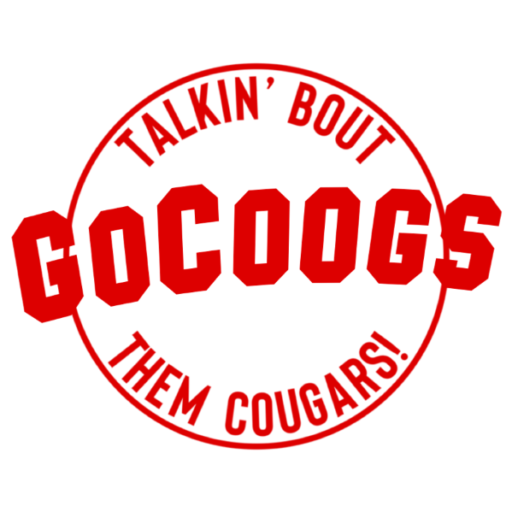For the last week, Kelvin Sampson used every tactic in his arsenal. He urged, implored, demanded, called on, and insisted his players get tougher after the Oregon win. Of course, they won in Eugene, but it wasn’t enough for Sampson. He wanted his team to be tougher so they could fight harder on the boards. “Tough teams rebound,” he said in practice numerous times this week.
And then he said the same thing in public. He holds his guys accountable in private, where the heavy hand is applied, and then he does it with the media. Everyone, at all times, knows where Kelvin Sampson stands. Everyone, at all times, knows that the essence of the Kelvin Culture is defense, toughness, and rebounding.
Most of the men’s basketball team fought illness and the flu this week – from Jamal Shead’s 103-degree temperature to missing the game (Ramon Walker) to Reggie Chaney not practicing all week to Ja’Vier Francis missing several days.
But it was Shead’s absence that rankled Sampson most: Kelvin hates when his point guard misses a practice. The PG creates on offense and is the point of attack on defense. Shead can defend with 103 fever but with him out much of the week, the team could not fully practice beating Kent State’s defense. It’s obvious why the team struggled on offense and on passing and turnovers, but Sampson and the players did not use it as an excuse. Discuss it with the media? Yes. But Sampson basically promised that practice on Sunday and Monday would be devoid of excuses and heavy on correcting the Kent State failures.
When I have the flu, I don’t want to leave bed, and for days, I ache just walking across the house. When UH players have the flu, they get a day or two to deal with it, and then they’re expected to show up, practice, play 33.5 minutes (Shead), and win the game.
It’s the minimum expectation.
In an interview this week, Marcus Sasser said Kelvin trusts he and Shead to call plays. In another interview, J’Wan Roberts said they’re learning every day and working to be playing better in February and March.

It’s what they’re building. Sampson teams are always better in March than they are in November. It’s not a question of if but how fast. When would Sampson’s rebounding and toughness message take hold?
Saturday, it turned out. Despite a horrible shooting night, UH rebounded. And rebounded. And kept rebounding. The year before Sampson got to UH, the Coogs had 34 or fewer rebounds in 17 of 34 games. Against Kent State, they had 34 rebounds at halftime and finished with 56.
Going back to 2000-2001, the Cougars had more than 56 rebounds exactly once: it was Kelvin’s first season against an overmatched Morgan State team. Otherwise, the Cougars have not pulled down 56 boards in this century.
But the number of rebounds isn’t the point. Sampson challenged his team this week, and they stepped up. J’Wan Roberts talked Friday night about the team not rebounding to their standard and what they want to improve: rebounding and being tougher, exactly what Sampson had been preaching.
“It’s a want-to. Just wanting to go rebound,” Roberts said. “Just wanting to break teams down by offensive rebounding, clean defensive rebounding, getting out and running.”
Roberts slipped into the mode the players laugh about: being “Sampsonized,” meaning that they’ve been conditioned to think and talk like their coach. Everyone gets Sampsonized, and everyone buys into the culture. It starts with identifying, evaluating, and signing recruits that are tough enough, who want to rebound, and who want to do the work. Then, it’s conditioning them to rebound and fight the way Sampson and their teammates demand. Finally, Sampson holds the team leaders accountable, and they are expected to hold the team accountable.
Sampson talks publicly about the little things and how his team needs to be great at the little things. He makes it a major emphasis in practice, too. The players have been Sampsonized on this point, too.
Before the season, I walked up to the second floor of the Guy V. Lewis Development Facility for a pre-scheduled interview with a player. The waiting area is just steps from the team locker room, and what I heard surprised me: raised voices and even some yelling. It was coming from multiple players, all directed at one of their own. It went on for several minutes, with some demanding that the player never do it again. It sounded serious. After defending himself for a few moments, the offending player relented and vowed to never do it again.
Moments later, our interview went on as promised. When we were finishing up our talk, I sheepishly asked the player about the commotion. He shook his head and rolled his eyes. The guilty teammate had been two minutes late for a workout, which was unacceptable to the team.
Kelvin Sampson has instilled a culture that permeates every layer of the program. It is built for wins and for championships, and as a byproduct, the Cougars are on the verge of being #1 in the AP Poll.
Support Cougar Athletes By Subscribing to HOUNIL
The name, image, and likeness (NIL) narrative is focused on how big businesses have spent millions on top-level athletes. But all Cougar Athletes should benefit from NIL, and so should UH fans. With HOUNIL.com, fans can subscribe to get exclusive, original Cougar Athlete content for as little as $20 a month.
UH Athletes that have worked with HOUNIL will tell you how much they have loved it. They get to share their stories with fans while benefitting from NIL, but UH athletes need you. Your grassroots participation compensates Cougar athletes for their name, image, and likeness. Membership to GoCoogs.com and the Veer forum are included in every HOUNIL subscription. Subscribe today!

You can also purchase a stand-alone subscription to GoCoogs.com and the Veer forum.
nbsp;

